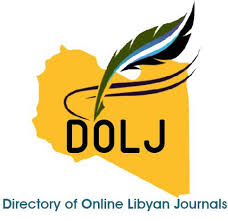Cesarean delivery in Zawia City, Libya prevalence and associated factors a cross-sectional study
DOI:
https://doi.org/10.54361/ljmr.16206Keywords:
Cesarean section, indication, Zawia City.Abstract
Background; A caesarean section is a surgical procedure that can save the lives of mothers and babies when certain complications arise during pregnancy or labour. Objective; To investigate the prevalence and factors associated with caesarean delivery in Zawia city, Libya. Methods: A cross-sectional study with data from 175 postpartum women interviewed between June and August, 2022. Multivariate logistic regression analysis was used to identify those factors associated with the Caesarean section. Results: Caesarean section rates were 70.9%. Factors associated with Caesarean section were: Significant evidence of an association was observed between mode of delivery and previous c-section. Mothers who didn’t have previous c-section had lower odds of c-section than who had at least one c-section (OR =0.026, 95% CI 0.009, 0.073, p=0.000). Mothers who desired of c-section in early pregnancy had higher odds of c-section than mothers who didn’t (OR =4.9, 95% CI 3.03, 7.9, p=0.000). Also, mothers who delivered in private facility had higher odds of c-section than mothers who delivered in public facility (OR =3.8, 95% CI 1.94, 7.65, p=0.000). Conclusion: It is necessary to properly orientate all pregnant women who desire a Caesarean delivery, from both the private and public health system, about the inherent risks of the surgical procedure without indication. Guidelines should be focused on pregnant women with previous Caesarean delivery, with a per capita income higher than one minimum wage and those who are overweight or obese, as these women are more likely to have a Caesarean section
Downloads
References
- WHO recommendations non-clinical interventions to reduce unnecessary caesarean sections. Geneva: World Health Organization; 2018. Licence: CC BY-NC-SA 3.0 IGO.
- Betrán AP, Ye J, Moller AB, Zhang J, Gülmezoglu AM, Torloni MR. The increasing trend in caesarean section rates: global, regional and national estimates: 1990–2014. PLoS One. 2016;11(2):e0148343. doi: 10.1371/journal. pone.0148343
- Appropriate technology for birth. Lancet. 1985;2(8452):436–7. doi: 10.1016/S0140- 6736(85)92750-3
- Betrán AP, Torloni MR, Zhang J, Gülmezoglu AM; WHO Working Group on Caesarean Section. WHO statement on caesarean section rates. BJOG. 2016;123(5):667–70. doi: 10.1111/1471-0528.13526
- WHO statement on caesarean section rates. Geneva: World Health Organization; 2015 (WHO/RHR/15.02; http://www.who.int/reproductivehealth/publications/ maternal_perinatal_health/cs-statement, accessed 31 May 2018
- Waldenström U, Hildingsson I, Ryding E-L. Antenatal fear of childbirth and its association with subsequent caesarean section and experience of childbirth. British Journal of Obstetrics and Gynaecology. 2006;113:638
- Vladic Stjernholm Y, Petersson K, Eneroth E. Changed indications for cesarean sections. Acta Obstetricia et Gynecologica Scandinavica. 2010;89:49
- Hansson Bittár M, da Silva Charvalho P, Vladic Stjernholm Y. Indications for Caesarean Sections and Actions to Prevent Unnecessary Caesareans. Archives of Gynecology and Obstetrics. 2018. In press
- WHO recommendations non-clinical interventions to reduce unnecessary caesarean sections. Geneva: World Health Organization; 2018. Licence: CC BY-NC-SA 3.0 IGO
- The General People’s Committee for Health and Social Insurance [Libya]. Arab Libyan Maternal and Child Health Survey: Principal Report. The Great Socialist; 1996
- Busarira MO, Gahwagi MM, Alaguri NK. Rate, indications and complications of caesarean section at Aljamahiriya Hospital, Benghazi, Libya. Bull High Inst Public Health 2011;41:359‑67.
- Raga A. Elzahaf, Soad Ajroud, Prevalence and Indication of Cesarean Section in Al‑Wahda Hospital, Derna, Libya: A Retrospective Study, Libyan Journal of Medical Sciences · January 2018, at:https://www.researchgate.net/publication/326077434.
Downloads
Published
Issue
Section
License
Copyright (c) 2022 Ali M Dwaib , osama H almjdoub (Author); Entesar Knaz, Suheala Atwair (Translator)

This work is licensed under a Creative Commons Attribution-NonCommercial-NoDerivatives 4.0 International License.
Open Access Policy
Libyan journal of medical Research (LJMR).is an open journal, therefore there are no fees required for downloading any publication from the journal website by authors, readers, and institution.
The journal applies the license of CC BY (a Creative Commons Attribution 4.0 International license). This license allows authors to keep ownership f the copyright of their papers. But this license permits any user to download , print out, extract, reuse, archive, and distribute the article, so long as appropriate credit is given to the authors and the source of the work.
The license ensures that the article will be available as widely as possible and that the article can be included in any scientific archive.
Editorial Policy
The publication of an article in a peer reviewed journal is an essential model for Libyan journal of medical Research (LJMR). It is necessary to agree upon standards of expected ethical behavior for all parties involved in the act of publishing: the author, the journal editorial, the peer reviewer and the publisher.
Any manuscript or substantial parts of it, submitted to the journal must not be under consideration by any other journal. In general, the manuscript should not have already been published in any journal or other citable form, although it may have been deposited on a preprint server. Authors are required to ensure that no material submitted as part of a manuscript infringes existing copyrights, or the rights of a third party.
Authorship Policy
The manuscript authorship should be limited to those who have made a significant contribution and intellectual input to the research submitted to the journal, including design, performance, interpretation of the reported study, and writing the manuscript. All those who have made significant contributions should be listed as co-authors.
Others who have participated in certain substantive aspects of the manuscript but without intellectual input should only be recognized in the acknowledgements section of the manuscript. Also, one of the authors should be selected as the corresponding author to communicate with the journal and approve the final version of the manuscript for publication in the LJMR.
Peer-review Policy
- All the manuscripts submitted to LJMR will be subjected to the double-blinded peer-review process;
- The manuscript will be reviewed by two suitable experts in the respective subject area.
- Reports of all the reviewers will be considered while deciding on acceptance/revision or rejection of a manuscript.
- Editor-In-Chief will make the final decision, based on the reviewer’s comments.
- Editor-In-Chief can ask one or more advisory board members for their suggestions upon a manuscript, before making the final decision.
- Associate editor and review editors provide administrative support to maintain the integrity of the peer-review process.
- In case, authors challenge the editor’s negative decision with suitable arguments, the manuscript can be sent to one more reviewer and the final decision will be made based upon his recommendations.














